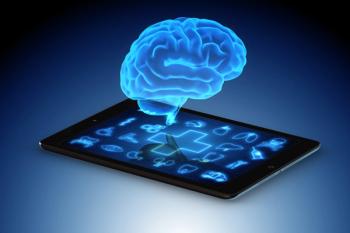
Delivering Health Care Through Digital Mental Health Ecosystems
Here’s how a digital mental health ecosystem can seamlessly connect and support all facets of mental health care.
Access to mental health and psychiatric services remains limited in the United States.1 Data shows 1 in 5 Americans will experience a diagnosable mental health condition in any given year,2 and early data suggests the COVID-19 pandemic likely increased the numbers of those needing care for a variety of clinical presentations.3 As the majority of health care systems pivoted toward virtual delivery during the pandemic,
While the body of research on these tools is nascent and growing, DMHTs have been studied in over 100 randomized clinical trials and have been found effective.5 A recent Banbury Forum Consensus on digital mental health called for broader adoption of DHMTs in care delivery, including the establishment of associated reimbursement mechanisms to cover these tools as a standard of care.6 In April 2020, the US Food and Drug Administration issued a public guidance to increase the
The Rise of the Ecosystem Approach
Efforts to integrate mental health into primary care settings have increased over the past 2 decades.9 One recent development is an ecosystem approach, namely the ability to seamlessly connect all facets of mental health care to primary care. The ecosystem approach addresses 2 key barriers to real world utilization of DMHTs: 1) selective self-initiation of use (simply making apps available is not sufficient to ensure successful uptake), and 2) limited adherence to a digital intervention once begun. Indeed, research shows that app-based cognitive behavioral therapy (CBT) is more effective with an introduction, a referral from a clinician or health coach, and the right level of clinical guidance.
A recent systematic review examined
Why a Digital Ecosystem?
Kaiser Permanente recently published a case study outlining the creation of a digital mental health ecosystem that includes digital mental health apps, patient-facing content, electronic medical record (EMR) functionality to support workflow integration, and clinician training in behavioral and primary care, including 562 clinicians.11 We found that this approach was not only feasible, but also widely embraced by patients and clinicians, who found it helpful for improving engagement and restoring daily function during treatment.11 Furthermore, patient use of DMHTs was 2 to 3 times the expected rate of similar apps downloaded from general app stores, and up to one-third of clinician-referred DMHT users were still actively using apps 3 months after initiation. A digital mental health ecosystem can therefore help target DMHT resources toward those patients and patient-clinician dyads who have the greatest need for them.
How to Create a Digital Ecosystem
Kaiser Permanente leveraged human-centered design (HCD) methods and principles when creating their digital mental health ecosystem (
Leveraging HCD methods enabled the Kaiser Permanente team to design, build, and test iterative approaches with clinicians and patients before moving to scale, and to ensure that any rollout of the ecosystem would be able to solve immediate clinical needs rather than create any new inconveniences. This deployment, and other similar efforts at Beth Israel Deaconess and the Veterans Health Administration,12 illuminate several essential considerations when developing an ecosystem approach. These include 1) app selection, 2) workflow mapping, including EMR functionality, and 3) training for clinicians and staff with modules to build digital literacy.
App Selection
While 97% of Americans own a phone, smartphone users make up 85% of total users, according to Pew Research.13 It would seem the delivery mechanism for apps is already in most patients’ hands. However, not all apps are created equal—many are low quality, and there are more than 10,000 digital mental health apps available to consumers.14
A good starting place for app selection comes from the American Psychiatric Association’s App Evaluation Model.15 The model covers several important considerations (
Two credible go-to sources of app reviews currently exist, including
Workflow and Training Considerations
Once the apps have been selected by the health care provider, team, or health care system, it is important to share the most salient app psychoeducational functionality that augments a care plan. In the Kaiser Permanente digital mental health ecosystem, the following functionalities—all part of the ecosystem—proved crucial for adoption: 1) patient- and clinician-facing web portals that enabled education about DMHTs and how they fit within a personalized care plan, and 2) a series of clinician-oriented brochures detailing key aspects of DMHT tools (eg, therapeutic orientation of skills taught, user journey overview, tear sheet, etc [
If someone is having difficulty sleeping as part of their depressive episode, a mindfulness app may be helpful, or a course of CBTi to support sleep hygiene habits. How might this be discussed in a clinical visit? How would a clinician choose which app might be of most use at this time? Listening to needs of patients and clinicians can help ensure frictionless integration of DMHTs into clinic workflows, and developing EMR tools can help promote seamless digital referrals. Since digital mental health competencies do not yet exist in formal clinical training, efforts to close the knowledge gap and provide opportunities to gain experience, such as academic detailing or clinical support forums, are likely to be very useful.20 These opportunities can also help adapt DMHT uses to the needs of solo practice psychiatrists or those working in group practice models.
Case Vignette
Jane began struggling with anxiety and panic several months after starting her new job as a clinic receptionist. She felt stressed to the point that she would have trouble breathing as soon as she entered the office.
“It was like being drenched by crashing waves of stress every day,” she said, “eventually, I just couldn’t go into work anymore.” She then isolated herself more from colleagues, followed by family and friends, until she was no longer answering phone calls or getting out of bed. “I just had no energy left for anything I needed to do,” she felt, “and then I started asking myself, what’s the point of living like this?”
Jane’s husband helped connect her to a nearby mental health clinic, through a direct phone call to the triage line. A social worker at the other end of the line began comforting Jane and providing supportive validation, then performed a rapid mental health assessment. She recommended Jane to start an intensive outpatient program at the clinic, which offered therapeutic group sessions and individual check-ins 4 times a week, with medication evaluation and management. Jane was booked for an intake appointment the next day.
Over the following week, Jane began to feel more calmed. “I realized I wasn’t the only person feeling this way,” she noted, “and I started to learn more about these negative thoughts that kept coming back, and what I could do about them.” While she was making progress in her recovery, however, she felt that applying the skills she learned to real life challenges remained difficult. Her intensive outpatient therapist recommended she download an app from a digital mental health portal, so she could begin
“I found that the app made it easier to use tools my therapist taught me, like deep breathing exercises,” Jane said. “When I’m outside of sessions, I know I can reach the app anytime and those techniques are all there.” She also found that tracking her symptoms reinforced her progress over time. “I was actually having more good days than I believed,” she realized. Although it took some time to experience the benefit of the antidepressant she was prescribed, as expected, she did notice a steady relationship between her medication use and her symptoms. She soon felt stable enough to transition to outpatient therapy: “Even though I was going to see a new therapist, I knew I had my toolbox with me and that wouldn’t change.”
She felt a positive connection to her new therapist, who encouraged her to continue using the app. Her symptoms soon resolved, and she was able to return to work. Although there were still occasional stressful moments on the job, she found the
Concluding Thoughts
Real-world implementation of DMHTs is moving rapidly, and many health systems are leaning into building digital mental health ecosystems. While much work remains to ensure these tools are deployed optimally, the value to patients having access to on-demand psychoeducation and support is difficult to ignore, especially during times of growing demand for mental health care. Digital mental health ecosystems can play an important role in unleashing the potential of DMHTs effectively and safely in care delivery settings. Mental health as a discipline is undergoing tremendous innovation, and these instruments can be a valuable addition to our patients’ care plan.
Dr Histon is a Senior Principal Consultant of prevention, wellness, and digital health; and Director of the Weight Management Initiative at Kaiser Permanente Care Management Institute. Dr Hsin is a psychiatry specialist in San Jose, California for the Permanente Medical Group. Dr Neuwirth is the Senior Director of Innovation and Design at Kaiser Permanente Care Management Institute.
References
1. Alonso J, Liu Z, Evans-Lacko S, et al.
2. Substance Abuse and Mental Health Services Administration. Results from the 2017 National Survey on Drug Use and Health: Detailed Tables. September 7, 2018. Accessed September 7, 2021.
3. Hossain MM, Tasnim S, Sultana A, et al.
4. Federation of State Medical Boards. US states and territories modifying requirements for telehealth in response to COVID-19. Updated August 23, 2021. Accessed September 7, 2021.
5. Firth J, Torous J, Nicholas J, et al.
6. Mohr DC, Azocar F, Bertagnolli A, et al.
7. US Food and Drug Administration. Enforcement policy for digital health devices for treating psychiatric disorders during the coronavirus disease 2019 (COVID-19) public health emergency. April 2020. Accessed September 7, 2021.
8. Torous J, Jän Myrick K, Rauseo-Ricupero N, Firth J.
9. University of Washington AIMS Center. Evidence base for CoCM. Updated February 1, 2021. Accessed September 7, 2021.
10. Kuroda N, Burkey MD, Wissow LS.
11. Mordecai D, Histon T, Neuwirth E, et al.
12. Connolly SL, Kuhn E, Possemato K, Torous J.
13. Pew Research Center. Mobile fact sheet. April 7, 2021. Accessed September 7, 2021.
14. Torous J, Roberts LW.
15. American Psychiatric Association. App Advisor. Accessed September 7, 2021.
16. Henson P, David G, Albright K, Torous J.
17. Baumel A, Muench F, Edan S, Kane JM.
18. The Division of Digital Psychiatry. Accessed September 7, 2021.
19. One Mind Psyber Guide. Accessed September 7, 2021.
20. Pote H, Rees A, Holloway-Biddle C, Griffith E.
Newsletter
Receive trusted psychiatric news, expert analysis, and clinical insights — subscribe today to support your practice and your patients.

















